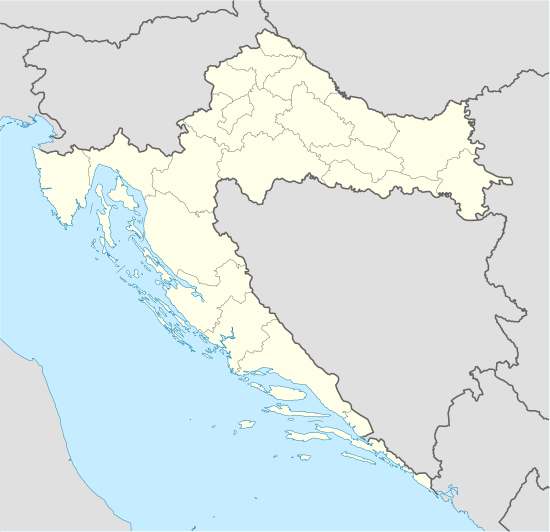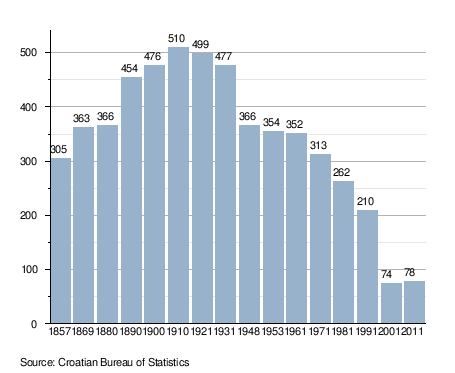Blinja
Blinja is a village in central Croatia, in the Town of Petrinja, Sisak-Moslavina County. It is connected by the D30 highway.
Blinja | |
|---|---|
Village | |
 Blinja Location of Blinja in Croatia | |
| Coordinates: 45°21′25″N 16°22′19″E | |
| Country | |
| Region | Continental Croatia (Banovina) |
| County | |
| Municipality | Petrinja |
| Population (2011)[1] | |
| • Total | 78 |
| Time zone | UTC+1 (CET) |
| • Summer (DST) | UTC+2 (CEST) |
| Postal number | 44211 |
| Area code(s) | (+385) 44 |
History
Petar Keglević obtained the Medieval Fortification in Blinja in XVI century.[2] In 1559 Ivan Lenković proposed destruction of the fortress so that it does not fall into the Ottoman hands.[2] In a report written by the commissioner of the Holy Roman EmperorFerdinand I , fortress is described as the last one before the Ottoman controlled lands, and that its walls are damaged and surrounded by water.[2] During the wider Siege of Gvozdansko offensive in 1578 the fortress was sieged, damaged but was not conquered by the Ottomans.[2] The fortress remained unconquered all until the Ottoman retreat after the end of the Great Turkish War and signature of the Treaty of Karlowitz.[2] Since that time fortification was not used and it deteriorated over the years.[2] The modern day ruins of the fortification are located in the forest covered hill south-east of the village.[2]
Demographics
According to the 2011 census,[1] the village of Blinja had 78 inhabitants. This represents 37.14% of its pre-war population according to the 1991 census.
Population change 1857–2011[1][3]

Religion
Serbian Orthodox Church of Saint Elijah
Serbian Orthodox Church of Saint Elijah in Blinja was constructed in 1809 on the site of earlier wooden church from 1780.[2] The local Orthodox parish was established in 1777 while its public records books are kept already from 1770.[2] The architectural stile selected for the new church was a combination of neoclassicism and baroque.[2] The permission for the construction of the church was issued by the Zagreb General Command of the Military Frontier and it is therefore believed that the project itself was designed by some of Zagreb's architects.[2]
Notable people
References
- "Population by Age and Sex, by Settlements, 2011 Census: Blinja". Census of Population, Households and Dwellings 2011. Zagreb: Croatian Bureau of Statistics. December 2012.
- Škiljan, Filip (2008). Kulturno – historijski spomenici Banije s pregledom povijesti Banije od prapovijesti do 1881 [Cultural and historical monuments of Banija with an overview of history Banija from prehistory to 1881.] (in Serbian). Zagreb, Croatia: Serb National Council. ISBN 978-953-7442-04-0.
- Naselja i stanovništvo Republike Hrvatske 1857-2001, www.dzs.hr